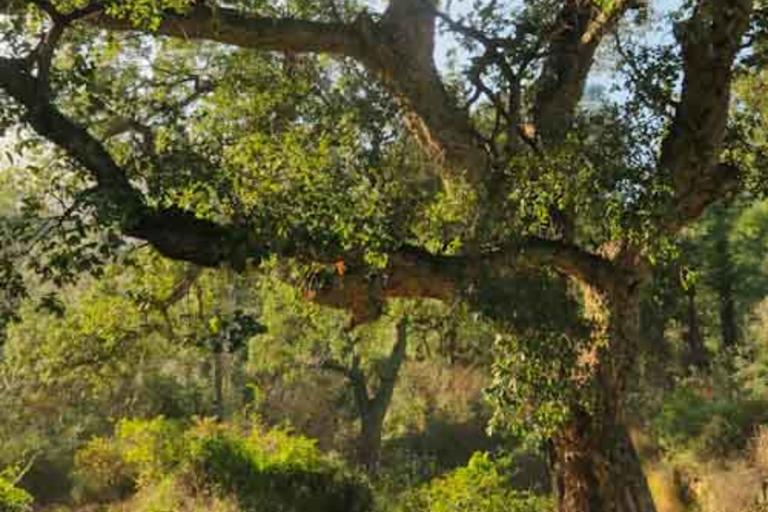
Introduction
We have crossed the Montjoi irrigation canal. If we look back below Montjoi de Dalt, we will see a uniform cover of trees; these are European nettle trees. One or two were planted next to the farms to give shade and its wood was valued for making farming implements (pitchforks).
In this area at the confluence of streams, with the soil deeper and damper, the trees become larger. The cork oaks at the side of the path are spectacular. In the sunny spots, they alternate with planted Monterey pines, (there are also Aleppo pines and some stone pines). There are very few remaining of what was the dominant tree on the Cap de Creus. In the hollows it is more usual to find normal holm oaks and, in the sunny spots, cork oaks. Notice the difference in size between the cork oaks in dry and stony sunny areas with the cork oaks that there are on the side here.
The exploitation of the bark to retrieve the cork is made by peeling or extracting it every 9 years.